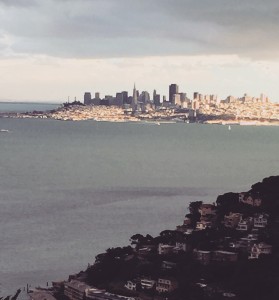 In the late Twenties, Antonio Bevilacqua leaves the environs of Lucca, in hopes of an acting career in the off-Broadway theatres of San Francisco.
In the late Twenties, Antonio Bevilacqua leaves the environs of Lucca, in hopes of an acting career in the off-Broadway theatres of San Francisco.
He comes from Fabbriche di Careggine, a little village in Garfagnana, the mountain region of Lucchesia (Tuscany).
Now Fabbriche di Careggine lies on the bottom of a lake after the construction of a dam. The dam has dammed the waters of the Edron river, creating an artificial lake. The town was evacuated. Every ten years the lake is drained for maintenance works on the dam. The ghost town emerges from the water.
In San Francisco Antonio comes into contact with the art world which centres on such figures as Ferlinghetti.
He is a DAGO, a CHIANTI, an ITHAKER.
For a time Antonio moves to Hollywood, where he is employed as a stand-in for Charlie Chaplin.
In the meantime, Antonio transformed himself into ‘Tony Drinkwater’ (the literal translation of his name)
He seems, therefore, to have found his ‘Merica’ of the ‘muvinpicce’ – a term derived from the English ‘moving picture’.
Tony speaks ITALIESE, an awkward yet somehow poetic half-English half-Italian pidgin used by the Dagos. For example, he says “giobbo” (from job), “stritta” (street), “corno” (corner), “sciumecca” (shoes maker).
In language as in life, Antonio Bevilacqua inhabits a no-man’s land between what he once was and what he has not yet become.
When Antonio goes back in Garfagnana, he is seen by villagers as an “american monster”. A reintegration is not possible anymore.